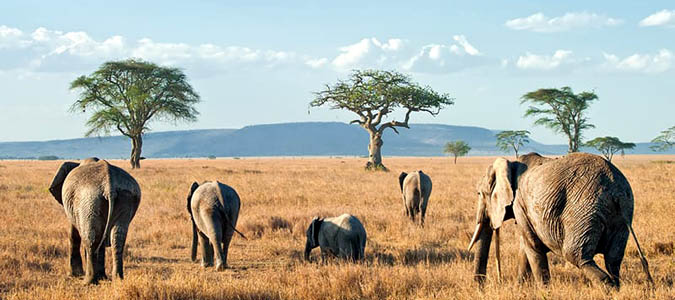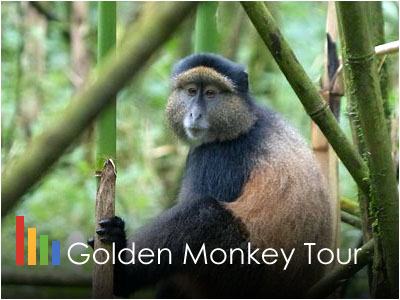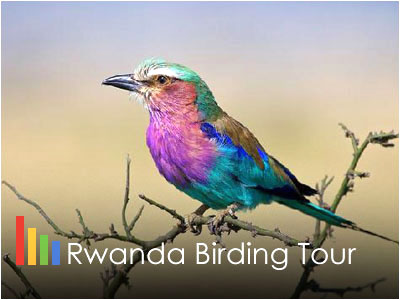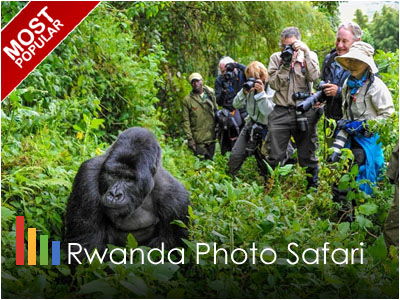Akagera National Park, Rwanda, Africa
Akagera National Park - Rwanda, Africa
Akagera National Park was named after the Akagera River that flows through the park and feeds into several beautiful swamp fringed lakes. With a backdrop of rolling hills dotted with African acacia woodlands and savannah grasslands, the park was formed to conserve the unique vegetation and wildlife. Replicating scenes like those seen in The Lion King, the breathtaking Akagera National Parkis home to some of the most impressive animals on the planet, including elephants, zebras, buffalos, baboons, leopards and hyenas, creatures who have found a home here amongst the stunning savannas, dramatic mountains, green grasslands and tree-fringed lakes. There are plans to reintroduce lions and black rhinos here now that poaching laws have been significantly strengthened, and with over 1200 kilometers to explore, visitors here can lose themselves for days in the awe-inspiring natural beauty.

Basic Facts - Akagera National Park, Rwanda
This National Park is located in the Northeastern part of Rwanda at the border with Tanzania. It covers an area of about 1,122 square kilometers. It is located around 135 km from Kigali town (2 hours 30 minutes away). The fascinating attractions that are worth visiting in this park include a network of lakes including Lake Ihema. This savanna park is widely known for game viewing because of the variety of wildlife species which include Savanna elephants, buffaloes, antelope species for example waterbucks, topi, Oribis, roan antelope, elands among others. The zebras, giraffes, leopards and spotted hyenas are also spotted in this marvelous National Park. Also more than 525 species of birds have been recorded in this Park and they include the shoebill stork, over 44 species of raptor, Albertine Rift endemic species like Handsome Francolin, Rwenzori Turaco among others. For your enjoyable and life refreshing game drives, visit the Akagera National Park and unleash your excitement.
More About Akagera National Park
Akagera was once a great wildlife reserve in Rwanda. Its boundaries encompassed 10% of Rwanda and it was considered one of the finest parks in all of Africa. But in the late 1990s, much of the area of the park had to be used to resettle refugees that had returned to Rwanda in the years following the genocide. As a result of the resettlement the park’s size shrunk in half. Many of the animals, including lions and rhinos, went extinct over the years following the genocide. Some killed by poachers, others by locals hoping to protect their livestock. But in the last decade, the government has implemented a strict conservation program in the Akagera National Park, aimed at protecting whatever wildlife was left and at reintroducing species that have gone extinct. In the last few years, 7 lions and 20 Eastern black rhinoceroses were brought from South Africa and reintroduced into the park. The animals have settled in well and have elevated game viewing in the park to a new height. Akagera is now the only National Park in Rwanda where visitors can spot all the “big five” along with impala, topi, zebra, waterbuck, and many others.
Akagera National Park was founded in 1934 by the Belgian government, which at the time occupied Rwanda. The park was 2,500 km2 (970 sq mi) large and was known for its biodiversity. Akagera used to have a large population of African wild dogs. At one point, it was known as the 'Parc aux Lycaons' and wild dogs were so abundant, that the Belgian government considered it a pest. However, a disease epidemic diminished the population and the last wild dogs were seen in 1984. In 1957, black rhinos were introduced from Tanzania. In the 1970s, more than 50 black rhinos lived in the savannah-habitat of the park. Due to widespread poaching, the population declined over the following decades, and the last confirmed sighting was in 2007. In 1986, Masai giraffes were introduced from Kenya. Their population has grown to over 80 individuals in recent years. For more information regarding Akagera National Park, DO NOT hesitate to Contact Us.
Akagera National Park is a protected area in eastern Rwanda covering 1,122 km2 (433 sq mi) along the international border with Tanzania. It was founded in 1934 and includes savannah, montane and swamp habitats. The park is named for the Kagera River which flows along its eastern boundary feeding into Lake Ihema and several smaller lakes. The complex system of lakes and linking papyrus swamps makes up over a third of the park, which is the largest protected wetland in Eastern-Central Africa. Akagera National Park lies in eastern Rwanda, hugging the border with Tanzania. It's characterized by woodland, swamps, low mountains and savannah. The varied terrain shelters wildlife including zebras, giraffes, elephants, lions and hundreds of bird species, such as the rare shoebill stork. In the southern part of the park, vast Lake Ihema is home to hippos and crocodiles. For more information regarding Akagera National Park, DO NOT hesitate to Contact Us.
Akagera is almost unrecognisable today compared to just 20 years ago when it was on the verge of being lost forever. While peace was finally restored in the 1990s after the 1994 Genocide against Tutsis, Akagera’s demise was just beginning. Refugees returning to Rwanda after the genocide were still battling for their own survival and turned to the forests for timber, wildlife for protein and the wild savannahs for their livestock. Lions were hunted to local extinction, rhinos disappeared, and the park’s wildlife was displaced by tens of thousands of long-horned cattle. Biodiversity was practically lost, and with it so was employment and tourism. The park’s value was diminished to the point of not existing at all. Which makes where Akagera is today, with its story of revival, even more remarkable.
Safaris within Akagera National Park offer visitors the opportunity to see a broad range of wildlife including herds of elephants and buffalo, leopards and lions. The plains are teeming with over a dozen species of antelope (including impala, oribi, bushbuck and the large Cape eland) as well as zebra and giraffe. The waterways are dominated by hippos and crocodiles. The many swamps and lakes of Akagera National Park make up the largest protected wetland area in central Africa and this is a bird-lovers paradise. Many rare species are attracted to the unique marshland including large flocks of waterbirds, the endangered papyrus gonolek, the shoebill stork and the majestic fish eagle. With a very different landscape to that of Rwanda’s other regions, Akagera National Park has classic African scenes of savannah plains with vast open space and acacia woodland. It is located in the East of the country bordering Tanzania and the area is rich with wildlife sustained by the intricate network of papyrus swamps, lakes and streams emanating from the Akagera River.
This park is one of the places that is not to be missed by any birder along with the great Nyungwe forest national park. It harbors 520 species of birds which are found in this national park. The birders who visit Akagera National Park are always impressed by what they find mostly the many bird species that range from water to forest and also savannah as well as the migratory bird species and many of these are endemic to the park and are so rare like the papyrus gonolex which is found in the papyrus swamps. There are also the localized red faced barbets, and the swamp fly catcher as well as the elusive shoebill stork all found in Akagera National park.
The natural wilderness of Akagera National Park is so mesmerizing that you could visit at any time of the year. Every season provides an opportunity to view the park in a new light. Although it is just a couple of degrees south of the equator, the park altitudes between 1250 - 1825 meters, which makes the climate temperate and enjoyable year-round. Bush vacationers are often surprised to find that the average high temperature remains moderate throughout the year, generally somewhere between 25 to 27 Celsius (77°F to 81°F). Nighttime low temperatures hover between 14°C and 16°C (57°F to 61°F), making for a comfortable sleep. Like the rest of the climate in Rwanda, Akagera Park has two dry seasons: the long dry season runs from June through September (the best time to visit), while the short dry spell lasts from mid-December to mid-February. If you are touring the reserve to view the incredible wildlife it sustains, you must choose the dry season for a visit. The undergrowth is sparse, and, since animals and birds converge on the water bodies to drink, they are easy to spot. There are also fewer bugs and navigating the forest roads in safari vehicles is a lot easier. These seasons are also perfect for combining your travel with a trek in Volcanoes National Park to view the famed mountain gorillas of Rwanda.
AfriChoice operates a wide range of carefully designed tours and safaris to Akagera National Park by providing transport and booking a hotel for you. Our safari consultants will always be at your assistance should you need a tailor-made holiday to this unique destination. NB: For more information regarding Akagera National Park, DO NOT hesitate to Contact Us.
Contact Us for more information:
Rwanda Popular Safaris and Tours
-
Kigali City Tour - Rwanda
Full Day Kigali City Tour
-
Rwanda Gorillas in the mist
3 Days Gorilla Tracking Rwanda
-
Rwanda Golden Monkeys
Gorillas and Golden Monkeys
-
Dian Fossey Gorilla Trail
Dian Fossey Gorilla Trail Safari
-
Rwanda Wildlife Safari
Rwanda Big Game Wildlife Safari
-
Best of Rwanda Safari
Best of Rwanda Culture & Wildlife
-
Rwanda Birding Safari
Rwanda Birds & Wildlife Safari
-
Rwanda Wildlife Photo Safari
Rwanda Wildlife and culture Photo Safari



 Paul Kitching - UK
Paul Kitching - UK Karen Howard - CANADA
Karen Howard - CANADA









